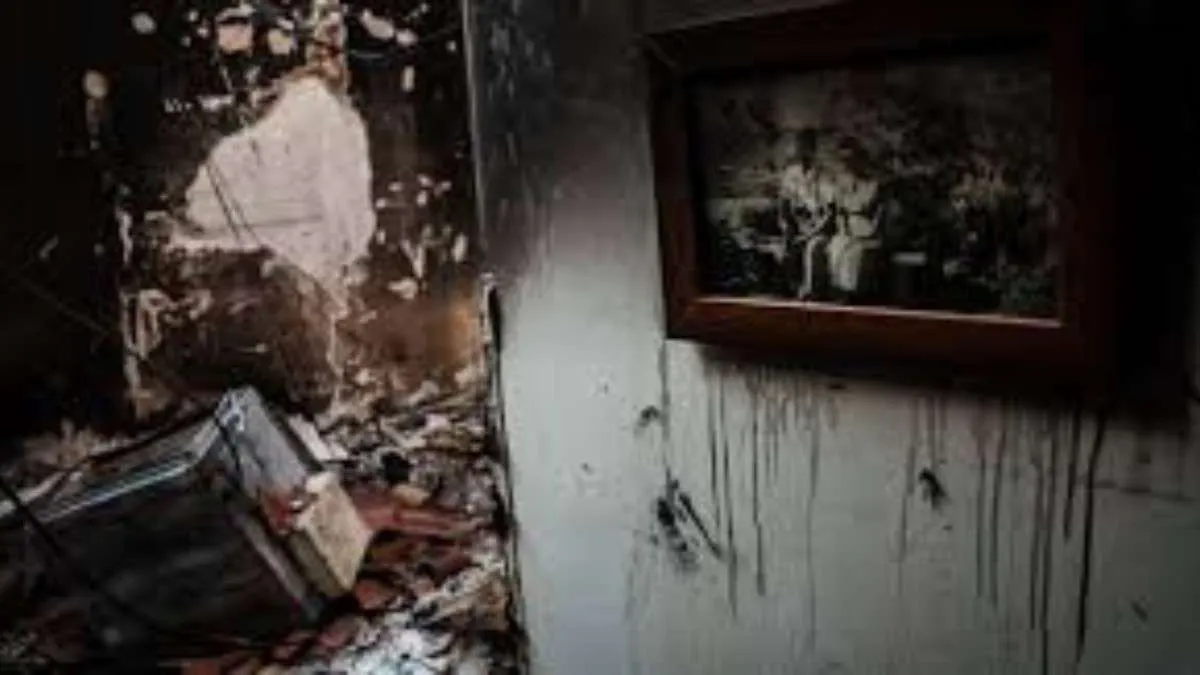Shamshad Begum was born in Lahore on April 14, 1919, in a Muslim family and 3e had one daughter, Usha Ratra, who is married to Lieutenant Colonel Yogesh Ratra.
Shamshad’s talent was first spotted by her principal when she was in primary school in 1924. Impressed by the quality of her voice, she was made head singer of classroom prayer. At 10, she started singing folk-based songs at religious functions and family marriages. She received no formal musical training. In 1931, when she was twelve, her uncle took her to Xenophone Music Company for an audition with Lahore-based musician and composer, Ghulam Haider. An impressed Haider gave her a contract for twelve songs. Her father Miya Hussain Baksh who was very conservative agreed to let her daughter sing on the condition that she would record in a burka and not allow herself to be photographed. Though earlier untrained, Shamshad now got formal music training from sarangi maestro Hussain Bakshwale Sahab and music director Ghulam Haider. Between 1937 and 1939.
Her popular breakthrough came when she began singing on All India Radio (AIR) in Peshawar and Lahore in 1937. Producer Dilsukh Pancholi offered a role in his film, but Shamshad’s father threatened that if she appeared before the camera, he would stop his singing too. Consequently, Shamshad never posed for photographs, and few people saw her picture between 1933 and the 1970s.
Ghulam Haider used her voice in some of his earlier films such as Khazanchi (1941) and Khandaan (1942). The songs “Cheechi Wich Pa ke Chhalla”, “Mera Haal Vekh Ke” and “Kankaan Diyaan Faslaan” from Yamla Jatt, 1940 set to music by Ghulam Haider became a huge hit. Haider continued to compose hit songs that Shamshad sang for films including Zamindar, Poonji, and Shama. Director Mehboob Khan used Begum’s voice in Taqdeer (1943), where he introduced Nargis as the heroine. Shamshad was soon singing for other composers including Rafiq Ghaznavi, Ameer Ali, Pt Gobindram, Pt Amarnath, Bulo C. Rani, Rashid Atre, and M. A. Mukhtar, in the pre-independence era.
When Ghulam Haider moved to Bombay in 1944, Shamshad went with him as a member of his team, leaving behind her family and staying with her Chacha (paternal uncle). After the partition, Ghulam Haider migrated to Pakistan but Shamshad remained in Mumbai. Shamshad became a national star between the early 1940s and the early 1960s, having a voice different from her peers such as Noorjehan (also discovered by Haider), Mubarrak Begum, Suraiya, Sudha Malhotra, Geeta Dutt, and Amirbai Karnataki. Her peak period in the Hindi film industry was from 1940 to 1955 and again from 1957 to 1968.
Shamshad sang extensively for composers including Naushad, O. P. Nayyar, C. Ramchandra, and S. D. Burman from 1946 to 1960. Naushad acknowledged in an interview that he was indebted to Shamshad for reaching the top, as she was famous before he became known in the late 1940s. Later, Naushad chose Shamshad to sing four out of the twelve songs in Mother India.
Shamshad was the highest-paid female singer from 1940 to 1955 and again post-Mother India from 1957 to 1964. Music Director SD Burman achieved national fame with tracks sung by Shamshad as he was not well established as a music director in Hindi films. It was Shamshad’s song in his debut film Shikari (1946), “Kuch Rang Badal Rahi” and later in Shabnam (1949), Shamshad’s multilingual song “Yeh Duniya Roop ki Chor” and duet with Mukesh “Kismat bichharna tha” gave Burman immense popularity. Burman subsequently asked her to sing tracks in Bazar (1950), Mashal (1950), Bahar (1951), Shahenshah (1953), and Miss India (1957).
Shamshad had met OP Nayyar during her radio stint in Lahore, when he worked as an office boy delivering cakes for the lead singers. In 1954. When Nayyar got a break as a composer, he approached Shamshad to record songs for Mangu. Nayyar described her voice as resembling a “temple bell” for its clarity of tone. He worked with her until the late 1960s and gave her many hit songs, including “Ab To Jee Hone Laga” from Mr. & Mrs. ‘55, “Main Jaan Gayi Tujhe” from Howrah Bridge, “Zara Pyar Karle” from Mangu (1954), “Saiyan Teri Ankhon Mein” from 12’ O Clock (1957), “Thoda sa Dil Lagake Dekho” from Musafirkhana, and many others.
Several of Shamshad’s songs from this period remain extremely popular, including those acted by Nigar Sultana, such as “Teri Mehfil Mein” from Mughal E Azam and “Mere Piya Gaye Rangoon” from Patanga (1949), as well as “Saiyan Dil Mein Aana Re”, and “Boojh Mera Kya Naam Re (CID)”. “Milte hi aankhen dil hua” from Babul (1950) had a romantic duet with Talat Mahmood. Her duet with Rafi, “Chhala Deja Nishani” from Bazar (1949) became a mega-hit.
In the late 1940s, Madan Mohan and Kishore Kumar sang as chorus boys for her songs at the Filmistan Studio. Shamshad promised at this time that she would sing songs composed by Madan Mohan once he started his career as a music director and would accept a lower fee. She also predicted that Kishore would become a great playback singer. She later recorded duets with Kishore, including “Gori ke Nainon Mein Nindiya Bhari” from Angarey (1954) and “Mere Neendon Me Tum” from Naya Andaz.
Shamshad was at the peak of her career right from 1940-1955 and was the most in-demand female singer and highest-paid female playback singer from 1940-1955. But after her husband’s accidental death in 1955, Shamshad became a recluse and stopped accepting singing assignments, including recordings for a year. Though she had stopped recording her songs in the year 1955 after her husband’s death, the songs released between 1955 and early 1957 included songs from films such as C.I.D., Naya Andaz, Baradari, Mr. & Mrs. ‘55 and other hits continued to be popular. At this juncture, Mehboob Khan approached her in 1957 and said he wanted a full-throated voice for Nargis in Mother India. The first song she sang after returning to her career was “Pee ke ghar aaj pyari dulhaniya chali” for Mother India. She made a successful comeback, and subsequently recorded many notable songs for films such as Howrah Bridge, Jaali Note, Love in Simla, Bewaqoof, Mughal-e-Azam, Bluff Master, Gharana, and Rustom-E-Hind.
Playback singer, Lata Mangeshkar, started singing when Shamshad was at the peak of her career. Shamshad’s break after her husband’s death boosted Lata Mangeshkar’s career. In the early careers of Mangeshkar.























